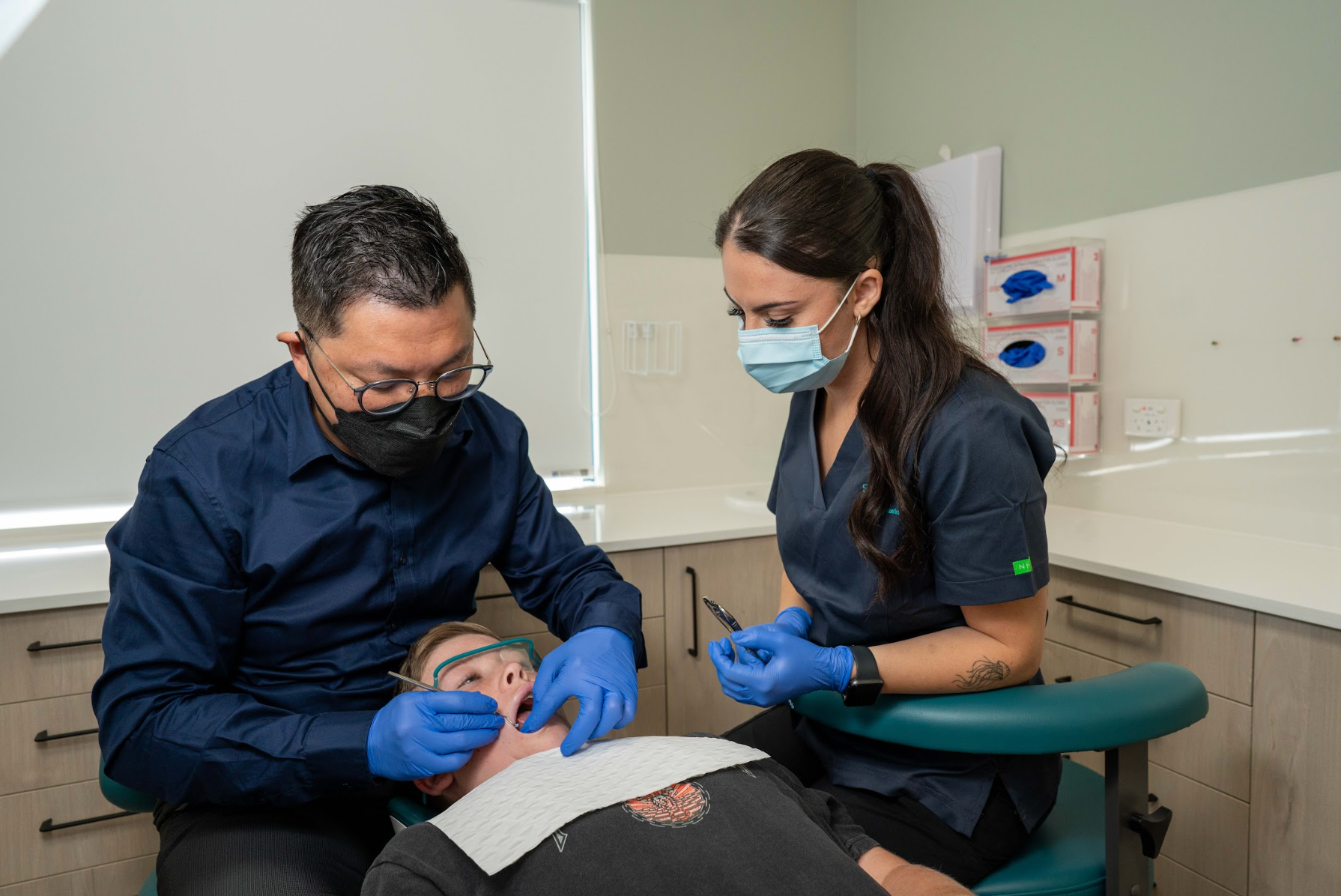
You might have heard of brackets, wires and rubber bands, but have you ever heard of braces springs? Braces springs are small yet powerful components of an orthodontic treatment. They are often used with traditional braces to correct alignment issues, close gaps, or adjust the spacing between teeth.
Understanding the role and benefits of braces springs is relevant for patients experiencing complex dental issues, where traditional components of braces alone might not suffice. For individuals aiming for a perfect smile or improved dental health, learning about the additional tools at an orthodontist’s disposal, like braces springs, can shed light on the comprehensive approaches used to achieve optimal results.
What Are Braces Springs?
Orthodontic appliances like braces often consist of brackets, wires, and rubber bands. Rarely have you heard of braces springs as part of the orthodontic treatment process.
Braces springs are small, coiled wires attached to brackets or archwires within your braces and help correct a range of orthodontic issues, from crowding to bite problems.
How Do Braces Springs Work?
Braces springs put gentle pressure on the mouth or teeth to fix spacing and alignment issues. The coils use a combination of tension and compression forces to gradually shift teeth into their desired position. It moves teeth into a better position, improving how your teeth fit together when you bite for appearance and function.
Benefits of Braces Springs
Braces springs offer advantages aimed at improving dental health and alignment:
- Correcting Crowded Teeth: Springs reposition overcrowded teeth by exerting gentle force to create space for a more aligned formation.
- Closing Gaps Between Teeth: Coil springs narrow the spaces between teeth, creating a more cohesive and aesthetically pleasing smile.
- Maintaining Space for Future Implants: For individuals awaiting dental implants, springs can hold the necessary space open, ensuring that adjacent teeth do not shift and compromise the implant’s placement area.
- Assisting with Bite Correction: When used with orthodontic appliances, braces springs can realign the upper and lower jaw, addressing issues such as overbites and underbites and improving the bite.
Types of Braces Springs
There are a few different types of braces springs, each with unique characteristics and serving different purposes:
Forsus™ Springs
Forsus™ springs are functional appliances that correct jaw and bite issues. Unlike traditional elastics, they do not rely on patient compliance, as they are fixed to the braces.
Forsus™ springs have wider coils connected to the top and bottom rows of braces and apply pressure on different parts of the jaw. It pushes out half of the jaw while pulling in the other for better jaw alignment, making them ideal for patients with underbites and overbites.
Forsus™ springs can reduce the need to wear headgear or shorten the time needed.
Coil Springs
As Forsus™ springs work to correct jaw and bite issues, coil springs are intended to address the spacing issues of the teeth.
Coil springs are either parallel to the archwire or threaded by the wire. It pulls two teeth together to close spaces or gaps in the teeth for someone who has undergone tooth extraction.
Costs of Braces Springs
When you undergo braces treatment and need braces springs, the cost is typically included in the overall cost of the treatment. The total expense of orthodontic care does not just hinge on these tools. However, it is influenced by various factors, such as the dental issue being addressed, the geographic location of the orthodontic practice, and the extent to which dental insurance will cover the treatment.
Installation Process of Braces Springs
The installation process of the braces spring is initiated with a comprehensive initial consultation and planning phase, the installation itself, and some follow-up adjustments.
Initial Consultation and Planning

During the initial consultation, patients undergo X-rays, dental impressions, and possibly 3D imaging to allow orthodontists to identify the patient’s issues, such as misalignment and bite irregularities. Based on these findings, the orthodontist discusses the treatment options in addressing the patient’s specific needs and goals.
Installing the Braces Springs
The braces springs are installed during a follow-up appointment, where braces are already in place. Springs are then affixed between these brackets, which usually take one to two hours, depending on the complexity of their case. Initial discomfort in other patients is normal as the teeth shift and adapt to the new pressure exerted to guide teeth in the correct position.
Follow-Up Adjustments
Regular adjustments, usually scheduled every four to six weeks, allow the orthodontist to monitor the progress of braces, including springs. It maintains the momentum of dental correction and adapting the treatment plan as the patient’s teeth alignment improves.
Care Tips for Braces Springs
Proper care and maintenance of braces springs ensure effectiveness and avoid potential complications during treatment.
Daily Maintenance and Cleaning
- Use a soft-bristled toothbrush to clean around the springs to prevent the buildup of food particles and plaque.
- Floss between teeth and under the wires daily to maintain gum health and prevent cavities.
- Rinse with a fluoride-containing mouthwash to kill bacteria and maintain good oral health.
Foods to Avoid
- Hard foods like nuts, hard candies, and ice can damage the springs.
- Sticky foods like chewing gum and caramel can get caught in the springs and damage it.
- High-sugar foods can cause plaque buildup and increase the risk of tooth decay.
- Crunchy foods like chips, crackers, and popcorn can get stuck in the springs, causing discomfort and potential damage.
Regular Orthodontic Visits
Regular orthodontist visits allow for the adjustment of braces springs, identify and address issues promptly and prevent delays in treatment progress.
When To Consult Your Orthodontist
Your orthodontist possesses the expertise and experience to assess the effectiveness of the braces springs for optimal results. They can provide personalised solutions and advice to any discomfort or issues you may encounter, preventing minor problems from escalating into major complications.
FAQs about Springs for Braces
Can braces springs fix all orthodontic problems, or are they better for specific ones?
Braces springs can better address spacing and alignment issues of teeth, such as closing gaps and correcting overcrowding, underbites and overbites.
How do braces springs compare to other treatments like clear aligners?
Braces springs are a fixed orthodontic treatment, while clear aligners offer a removable option.
How have braces springs improved for comfort and results?
Efficient springs exert a gentle force over time, reducing discomfort that enhances the overall treatment experience and results.
Are there age limits for using braces springs?
There are no strict age limits for using braces springs.
Do things like sports affect the use of brace springs?
Patients are advised to wear a mouthguard while playing sports, whether they have braces (with springs) or not.
Do climate or water quality impact braces springs?
No. However, proper care instructions ensure the longevity of the springs.
Can braces springs be customised for looks?
No, as these are functional orthodontic components.
Conclusion
Braces springs can correct dental issues such as misalignment, spacing, underbites, and overbites. Their cost is typically bundled with the overall treatment, and their success heavily relies on proper installation and diligent care.
While the initial adjustment period can bring discomfort, regular orthodontic visits and adherence to care guidelines can mitigate challenges and pave the way for effective treatment. It’s important to remember that while braces springs are versatile, they may not suit every orthodontic problem. Consulting an orthodontist determines if braces springs are the right option for addressing your orthodontic needs.